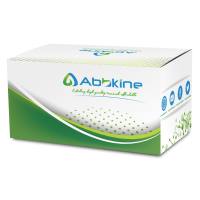SDS-PAGE With Silver Staining
互联网
1177
Introduction
Silver staining is the most sensitive protein staining method available for gel electrophoresis so far. It can detect as little as 5 ng protein in a 2.5 mm wide band in 0.75 mm thick gel. Different protein will give different intensity of the staining. Hence for some protein, the detection limit may be as low as 1 ng. The procedure described below is essentially that reported by Morrissey (Anal. Biochem., 117: 307-310, 1981) and is suitable for sds-page of proteins. For other types of gel electrophoresis of proteins or peptides, modification of the initial fixation procedure is required.
General precaution
Wear washed rubber gloves in all operation. This will avoid fingerprints on the gel. Stainable contaminants of mol. wt. 67-70 kDa are suggested to be keratin derived from skin squamous. Keep bare fingers out of any solution!!
Filter all solutions for preparing and running the gel through a 0.45 µm membrane filter to prevent streaking due to particles present in the solutions.
All glasswardes should be acid washed and other plastic-wares washed with 2% SDS, rinsed thoroughly with distilled water and left air dry.
Try to carry out the entire procedure in the same polyethylene container or glass dish by aspirating off solutions rather than transferring the gel.
SDS gel electrophoresis
Prepare and run the gel using the standard sds-page procedure.
Use 120 ng of protein standard (consisting of 6 to 8 proteins, approximately 20 ng each) per well for 5 mm well, when your sample contains 10-20 ng of protein per band. Avoid cross contamination when loading the standard and samples. Try to match the concentration of protein in your standard and samples. Try to match the concentration of protein in your standard to those in your sample to prevent over-staining one while under-staining the other.
Silver staining
Solutions
50% methanol 10% acetic aciundefined
5% methanol 7% acetic aciundefined
10% glutaraldehydundefined
Dithiothreitol (DTT) 5 µg/mundefined
0.1% silver nitratundefined
3% sodium carbonate
37% formaldehyde
2.3M citric acid
~undefined these solutions must be prepared freshly)
Staining procedure
All volumes are 300 ml for 1.5 x 160 x 160 mm gel (biorad large gel) or 50 ml for 1.5 x 80 x 60 mm gel (Biorad mini gel). Incubation time can be reduced by half if the gel is only 0.75 mm thick. The gel is shaken gently and continuously in the solution throughout all incubation. Volumes are adjusted accordingly if gels of different size are used
Fix the gel in 50% methanol and 10% acetic acid for 2 h with one change of the fixing solution after 1 h (gel may be left in the second change fixing solution overnight)
30 min in 5% methanol and 7% acetic acid
30 min in 10% glutaraldehyde. Gel becomes more and more fragile after this step and should be handled with care.
Wash thoroughly with ddw ( at least 2 h, with change every 15 min; or several changes overnight), until no smell of glutaraldehyde in the washing.
30 min dithiothreitol (DTT, 5 µg/ml)
45 min 0.1% silver nitrate
Rinse rapidly three times with ddw, then rapidly three times with a small volume of developer (0.15ml of 37% formaldehyde in 100 ml 3% sodium carbonate). Prepare the developer just before use.
Add developer and shake gently until the brown protein bands reach desired intensity.
Add 0.05 volume (i.e. 15 ml to 300 ml or 2.5 ml to 50 ml) of 2.3 M citric acid directly to developer (solution fizzes due to the generation of carbon dioxide gas) and the resultant solution is mixed gently for 15 min to stop the reaction. Citric acid will neutralize the developer and stop development. This amount is critical. If the pH remains too high, development will not stop, and if the pH falls too low, the gel will bleach. Check pH with pH paper.
Rinse the gel with several changes of ddw for 1 to 2 hrs. Then incubate the gel in 0.03% sodium carbonate for another 15 min to prevent bleaching.
Stained gel can be stored at this stage in 20% methanol 5% glycerol 0.03% sodium carbonate in sealed plastic bag, or dry the gel.







